Comets discovered between February and March 2016
COMET C/2016 C1 PANSTARRS
R. Wainscoat and R. Weryk report the discovery of an apparent comet in four w-band exposures taken on Feb. 12.5 UT with the 1.8-m Pan-STARRS1 telescope on Haleakala. The object showed a tail extending for approximately 15" to the east. After the object was posted on the Minor Planet Center's PCCP webpage, other CCD astrometrists have also commented on the object's cometary appearance. H. Sato, Tokyo, Japan, writes saw the comet on images taken with a 0.51-m f/6.8 astrograph (+ luminance filter) at Siding Spring on Feb. 13.5UT. Images taken on Feb. 13.9 by T. Lister, S. Greenstreet, and E. Gomez with a 1.0-m f/8 Ritchey-Chretien reflector at Sutherland, South Africa, show a coma of diameter about 6".5 with an extension out to about 11".
The available astrometry (spanning Feb. 12-13), the following very preliminary parabolic orbital elements by G. V. Williams, and an ephemeris appear on MPEC 2016-C175.
T = 2016 Jan. 5.5347
Peri.= 326.4148
Node=181.4226
q = 8.524482 AU
Incl. = 56.7239
e=1.0
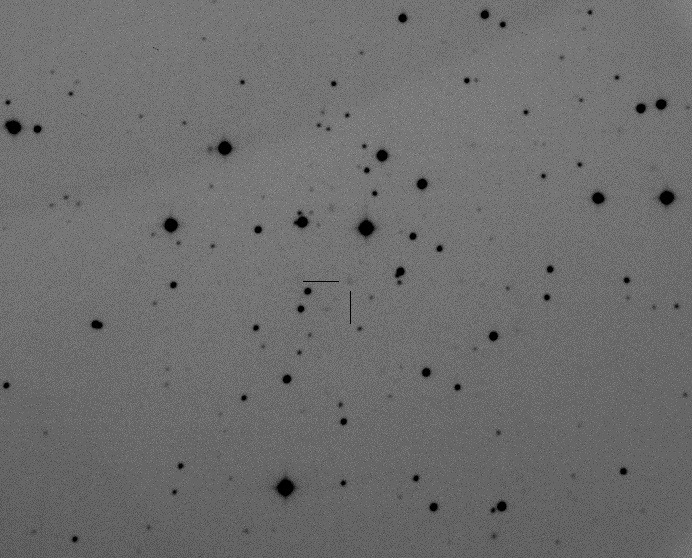
2016.02.15.6500UT, 5*60s, 45cm F4.6 Reflector, FLI ML8300, 2 bin, 1/2 trimming, taken at Fujimi-machi, Nagano, Japan by Kunihiro Shima
COMET C/2016 BA14 PANSTARRS
An apparently asteroidal object discovery with the 1.8-m Pan-STARRS1telescope on Haleakala on Jan. 22 and given the minor-planet designation 2016 BA14 (cf. MPEC 2016-B79). M. M. Knight, M. S. P. Kelley, and S. Protopapa, University of Maryland, report that 2016 BA14 shows evidence of a faint tail in CCD images acquired with the 4.3-m Discovery Channel Telescope at Happy Jack, AZ, USA, on 2016 Feb. 10.2 and 13.2 UT. Images obtained by Knight on Feb. 10 showed hints of a faint tail near p.a.60 degrees. Longer exposures by Kelley and Protopapa on Feb. 13 more clearly show the tail at p.a. about 65 degrees with a length of at least 10". The available astrometry (including pre-discovery Pan-STARRS1 observations from 2015 Dec. 1.5 UT, when the measured magnitude was 20.6-21.7), the following elliptical orbital elements by G. V. Williams, and an ephemeris appear on MPEC 2016-C192. M. Knight notes that D. Denisenko has called attention to the similarity of this orbit to that of comet 252P/LINEAR.
T = 2016 Mar. 15.51743
Peri. = 351.89507
Node= 180.53540
Incl. = 18.92005
q = 1.0085751 AU
e = 0.6663143
a = 3.0225307 AU
P =5.26 years
The comet passes 0.024 AU from Earth on March 22 became the 5th close approach of a comet recorded. Although intrinsically very faint, the comet reached 13th magnitude at closest approach, and moved rapidly across northern skies.
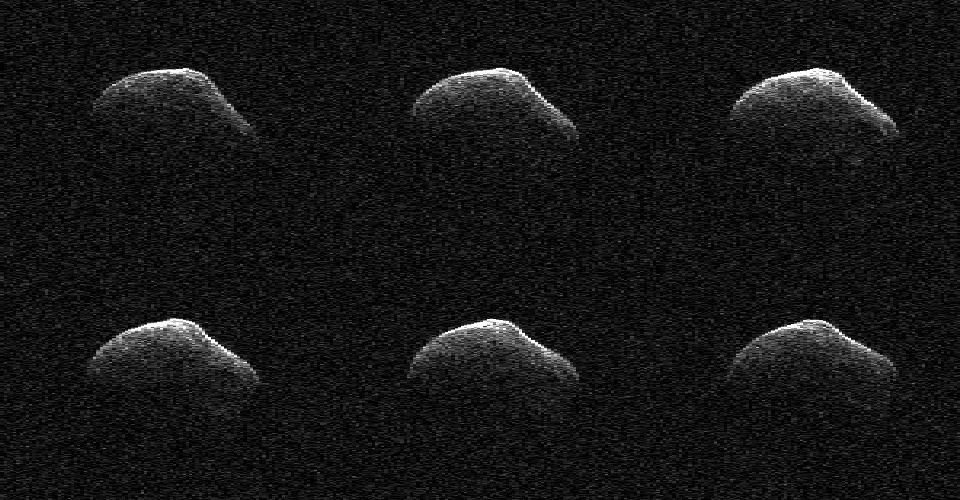
NASA/JPL-Caltech/GSSR
COMET C/2016 C2 NEOWISE
J. Bauer, Jet Propulsion Laboratory, reports that another object found on infrared images taken by NEOWISE the presence of a weak coma. J. V. Scotti obtained observations with the Spacewatch 1.8-m telescope on Feb. 17.5 UT and showed that the object was very slightly diffuse with a coma diameter of 8" and red mag 19.2-19.4, and there is a very faint tail extending 0'.16 in p.a. 305 degrees. After the object was posted on the Minor Planet Center's PCCP webpage, other CCD astrometrists have also commented on the object's cometary appearance. H. Sato, Tokyo, Japan, writes that twelve stacked 60-s exposures taken on Feb. 16.8 with a 0.51-m f/6.8 astrograph (+ luminance filter) at Siding Spring show the comet to be strongly condensed with an asymmetrical outer coma 25" in diameter but with no tail; the w-band magnitude was 18.0 as measured within a circular aperture of radius 13".0. The available astrometry (spanning Feb. 8-18), the following preliminary parabolic orbital elements by G. V. Williams, and an ephemeris appear on MPEC 2016-D25.
T = 2016 Apr. 19.0290
Peri.= 214.0105
Node= 24.5586
q = 1.567113 AU
Incl. = 38.1923
e=1.0
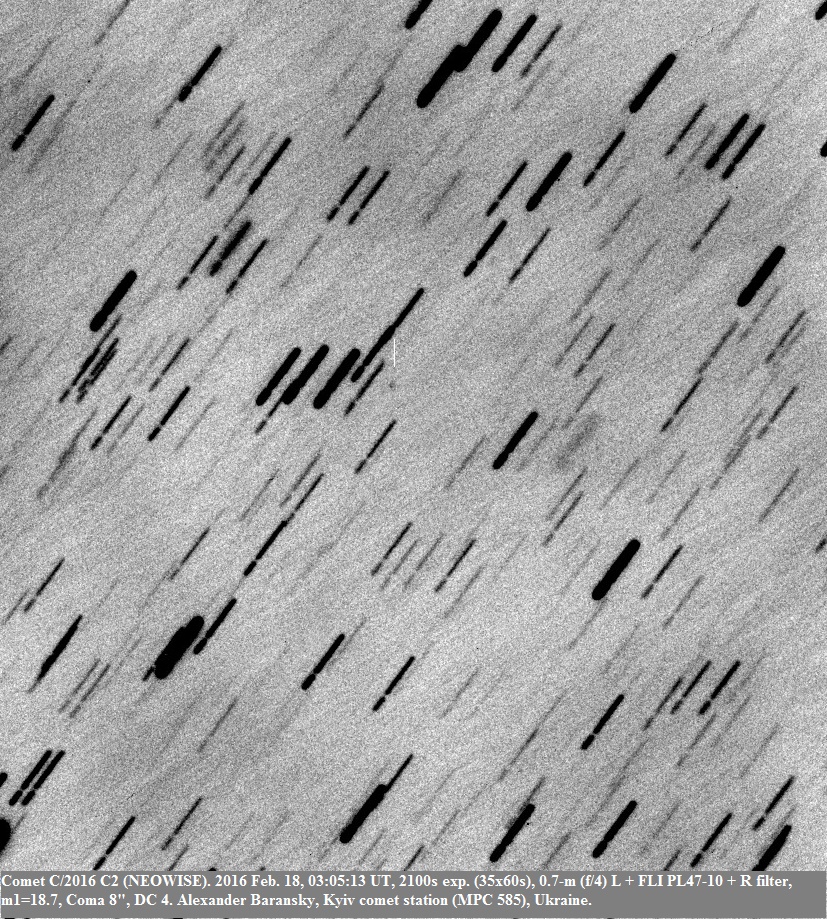
©Alexander Baransky
COMET C/2016 E1 PANSTARRS
R. J. Wainscoat and R. Weryk report the discovery of a comet on images taken on Mar. 3 UT with the 1.8-m Pan-STARRS1 telescope at Haleakala. After posting on the Minor Planet Center's PCCP webpage, other CCD astrometrists have noted the object's cometary appearance. H. Sato, Tokyo, Japan, remotely from Siding Spring obtained several images revealing a strongly condensed, compact coma 6" in diameter with no tail. The available astrometry (spanning Mar. 3-11), the following preliminary parabolic orbital elements by G. V. Williams, and an ephemeris appear on MPEC 2016-E113.
T = 2017 Aug. 25.8441
Peri =53.1879
Node = 233.0379
q = 7.914668 AU
Incl. = 131.9804
e=1.0
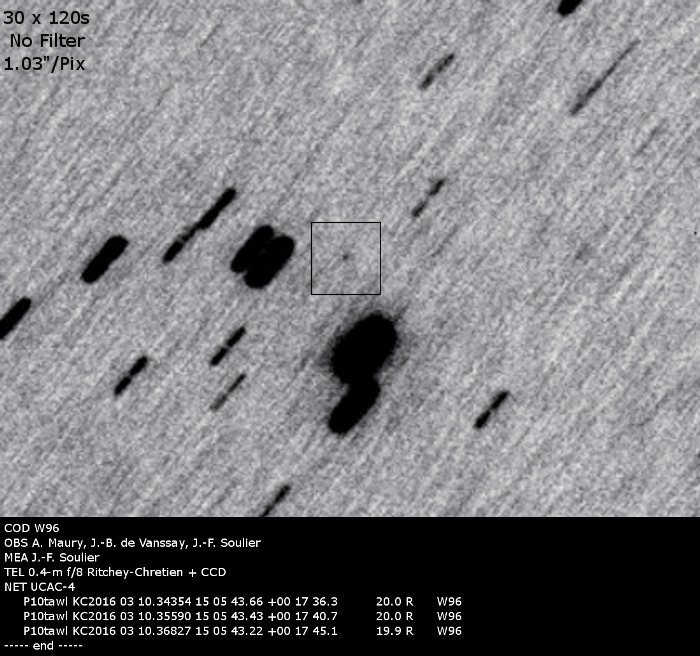
©Jean-Francois Soulier
COMET C/2016 E2 KOWALSKI
R. A. Kowalski reports the discovery of a diffuse comet with a coma diameter approximately 8"-10" and a short stubby tail in p.a. 275 degrees on CCD images obtained with the 0.68-m Schmidt telescope in the course of the Catalina Sky Survey on Mar. 15.44-15.46 UT. Follow-up CCD mosaic 50-s images obtained by A. F. Tubbiolo with the Spacewatch 0.9-m f/3 reflector at Kitt Peak on Mar. 15.52 UT show a comet with a tail 20" long in p.a. approximately 200 deg. After posting on the Minor Planet Center's PCCP webpage, other CCD astrometrists like E. Guido and N. Howes, confirmed cometary nature remotely on Mar. 16.4 with an iTelescope 0.25-m f/3.4 reflector in New Mexico reveal a diffuse, irregular coma nearly 10" in diameter. The available astrometry (spanning Mar. 15-16), the following preliminary parabolic orbital elements by G. V. Williams, and an ephemeris appear on MPEC 2016-F03.
T = 2016 Feb. 6.7030
Peri. = 322.0073
Node =186.6663
q = 1.075666 AU
Incl. = 136.0051
e=1.0
This is the 13th comets for Richard Kowalski.
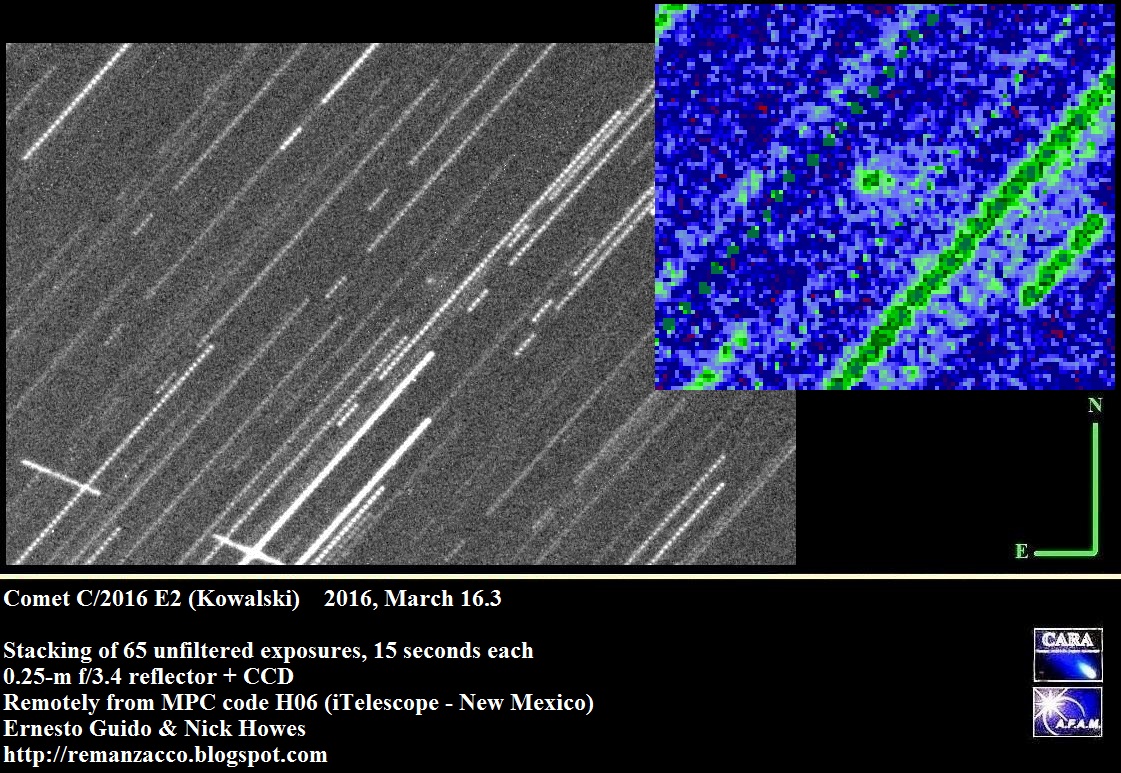
No results found.
